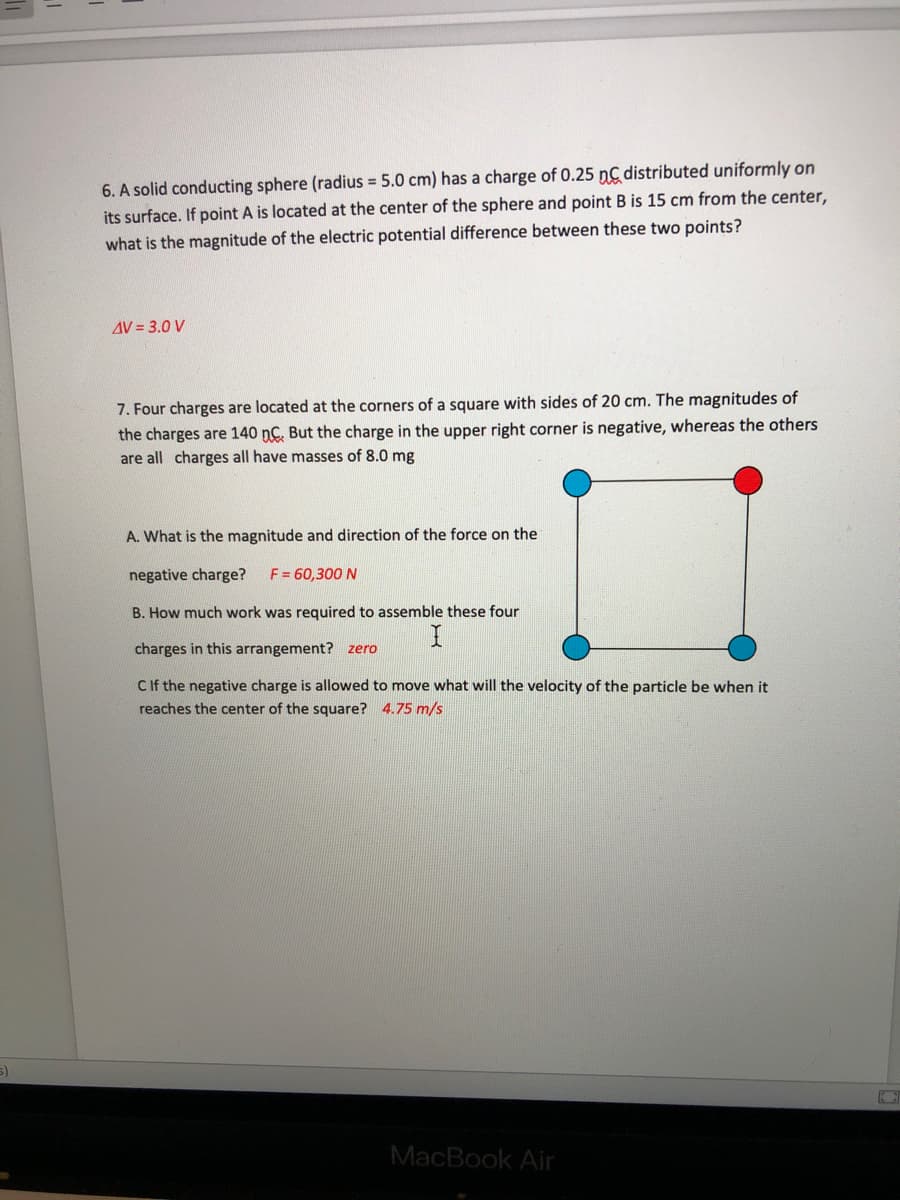6. A solid conducting sphere (radius = 5.0 cm) has a charge of 0.25 nC distributed uniformly on its surface. If point A is located at the center of the sphere and point B is 15 cm from the center, what is the magnitude of the electric potential difference between these two points?
6. A solid conducting sphere (radius = 5.0 cm) has a charge of 0.25 nC distributed uniformly on its surface. If point A is located at the center of the sphere and point B is 15 cm from the center, what is the magnitude of the electric potential difference between these two points?
Related questions
Question
Please help me ASAP? I want explanations answers are here

Transcribed Image Text:6. A solid conducting sphere (radius = 5.0 cm) has a charge of 0.25 nC distributed uniformly on
its surface. If point A is located at the center of the sphere and point B is 15 cm from the center,
what is the magnitude of the electric potential difference between these two points?
AV = 3.0 V
7. Four charges are located at the corners of a square with sides of 20 cm. The magnitudes of
the charges are 140 nC. But the charge in the upper right corner is negative, whereas the others
are all charges all have masses of 8.0 mg
A. What is the magnitude and direction of the force on the
negative charge?
F = 60,300 N
B. How much work was required to assemble these four
charges in this arrangement? zero
CIf the negative charge is allowed to move what will the velocity of the particle be when it
reaches the center of the square? 4.75 m/s
MacBook Air
Expert Solution
Step 1
Trending now
This is a popular solution!
Step by step
Solved in 4 steps with 1 images
